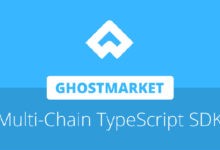Axelar Introduces Virtual Machine For Developers Building Cross-Chain Crypto Apps

Axelar, the blockchain network that helps developers build cross-chain crypto apps, is expanding its product suite with the introduction of Axelar Virtual Machine (VM) – a generalized environment for building interconnected blockchains.
“Axelar Virtual Machine will allow developers to build their dApps (decentralized apps) once – whether on EVM, Cairo VM, Cosmos or another ecosystem – and run them on all chains,” Axelar said in a statement.
Most blockchains today are walled gardens; apps built on one chain typically lack access to data or services on another. Different blockchains can use different programming languages, and operating across chains generally means using headache-inducing infrastructure like bridges and oracles.
Axelar describes itself as “Stripe for Web3” – just as Stripe provides a one-stop-shop for Web2 developers to bake virtually any banking institution into their apps, Axelar aims to help Web3 developers integrate seamlessly across different chains.
Axelar’s main product offering today is a network that was purpose-built to communicate with a growing set of different blockchains. The Axelar network and its accompanying Application Programming Interface (API) help developers build crypto apps that work with assets on all of these chains.
But building cross-chain crypto apps remains complex – each time a developer deploys on a new chain, they need to run through a lengthy set-up process and re-tool their code for chain-specific quirks. By Axelar CEO Sergey Gorbunov’s estimate, cross-chain developers spend “70% of their time” prepping their code to deploy on new chains “versus actually coding the application logic.”
“We kind of took a step back and said, ‘Okay, how can we simplify all of these issues for the ecosystem?’” Gorbunov told CoinDesk. “This is where the idea of creating an excellent virtual machine – an interoperability layer – came about.”
The Axelar Virtual Machine
A virtual machine is like a software version of a physical computer – it is a place to build applications that read and write data in a shared space. (The Ethereum Virtual Machine, for instance, hosts programs – called smart contracts – that can alter the state of the Ethereum ledger.)
Axelar says its new VM will extend upon the protocol’s cross-chain mission by providing a framework for building blockchains that – like the Axelar network – can natively swap assets and messages between one another. Blockchains built using Axelar’s new VM will be able to talk to one another, and app builders that develop VM-compatible apps will be able to deploy their software onto VM-compatible chains.
Taking the Stripe analogy a step further, Gorbunov describes the new Axelar VM as a Web3 version of Google’s Kubernetes – a popular toolkit that provides building blocks for developers to spin up and scale web apps.
“Kubernetes allows you to program how you want to deploy your application in the Web2 world. Like what are the regions where it needs to be deployed? What are the application servers? What are the databases behind it?” Gorbunov explained. “Similarly, using the [Axelar] virtual machine, we can let [Web3] developers specify their deployment configurations and then upload their code. And then with one transaction, that code will get pushed to all the chains interconnected through the Axelar protocol.”
Over the next six months as Axelar begins to roll out its VM, Gorbunov says his team will be “working with app developers and protocol developers to build templates” that will allow developers to roll out their apps with certain deployment conditions pre-configured.
Axelar’s most recent fundraising round valued the company at over $1 billion. According to Axelarscan, a tool that tracks Axelar network activity, the protocol is currently connected to 32 different chains – including Ethereum, Polygon, Avalanche and Arbitrum – and has processed $86 million in asset transfers over the past 30 days.






 Bitcoin
Bitcoin  Ethereum
Ethereum  Tether
Tether  USDC
USDC  TRON
TRON  Dogecoin
Dogecoin  Cardano
Cardano  Bitcoin Cash
Bitcoin Cash  Chainlink
Chainlink  LEO Token
LEO Token  Zcash
Zcash  Monero
Monero  Stellar
Stellar  Litecoin
Litecoin  Hedera
Hedera  Dai
Dai  Cronos
Cronos  OKB
OKB  Tether Gold
Tether Gold  Ethereum Classic
Ethereum Classic  KuCoin
KuCoin  Gate
Gate  Algorand
Algorand  Cosmos Hub
Cosmos Hub  VeChain
VeChain  Tezos
Tezos  Dash
Dash  Stacks
Stacks  TrueUSD
TrueUSD  IOTA
IOTA  Basic Attention
Basic Attention  Decred
Decred  Theta Network
Theta Network  NEO
NEO  Synthetix
Synthetix  Qtum
Qtum  Ravencoin
Ravencoin  0x Protocol
0x Protocol  DigiByte
DigiByte  Zilliqa
Zilliqa  Nano
Nano  Holo
Holo  Siacoin
Siacoin  Numeraire
Numeraire  Waves
Waves  Ontology
Ontology  Status
Status  Enjin Coin
Enjin Coin  BUSD
BUSD  Hive
Hive  Pax Dollar
Pax Dollar  Lisk
Lisk  Steem
Steem  Huobi
Huobi  OMG Network
OMG Network  NEM
NEM  Bitcoin Gold
Bitcoin Gold  Ren
Ren  Augur
Augur